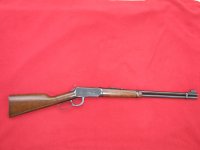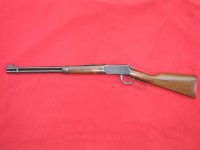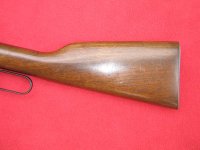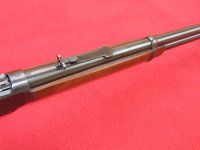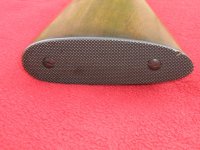Winchester announced the introduction of the Model 1894 rifles and started filling orders in 1895. This development was coincidental with the new .30 WCF cartridge, later known by the more common moniker ".30-30". This was the first American rifle cartridge developed for the new smokeless powders.
Also offered in .25-35, .32 WCF (.32 Special), .38-55, and perhaps a few others on special order, the Model 1894 was a huge commercial success. By about 1970 over 6 million pieces were produced in a wide variety of rifle and carbine models. The .30-30 was the most common caliber and had a great deal of success with customers.
.32 Winchester Special was an interesting development. Essentially the same cartridge case, but necked up to accept a .32 caliber bullet with rifling twist intended to maximize performance in that bore, but most especially intended for those who might not jump on the new smokeless powder bandwagon and intended to provide best performance with black powder loads with cast bullets. This filled a market niche among those not willing to make the big change to smokeless before much more experience was available.
The .32 Special remained relatively popular until 1980 or so, and many folks debated the relative merits of the .30-30 and .32 WCF for hunting, or accuracy, or ease of handloading, etc, for decades. In reality there is very little difference between the two for any practical purpose.
Your approx. 1950 vintage Model 94 Carbine is a very desirable piece for both collectors and shooters. Condition is everything. While you have the original hang-tag (by all means, keep that with the carbine) the Winchester has been stored for over a half-century, so nicks and scratches could become issues for value. Also, if the carbine has been fired it is likely that it was done with pre-1960's ammo, which was almost all loaded with primers based on fulminate of mercury, known to cause serious damage to chambers, bores, and rifling unless promptly and thoroughly cleaned with appropriate means (hot soapy water followed by thorough oiling prior to storage).
I advise having the carbine closely inspected by a knowledgeable gunsmith or other expert, with particular attention to any issues related to use or storage. If in 95%-plus condition I would expect market value to be in the range of $900 to $1200. If any significant issues exist I would expect market value to be reduced by 20% to 50%.
Demand and market conditions vary considerably across the United States. If you intend to sell your carbine I would recommend doing so in a venue that provides national exposure, as some regions may not support best prices due to local demand.
Best regards.


